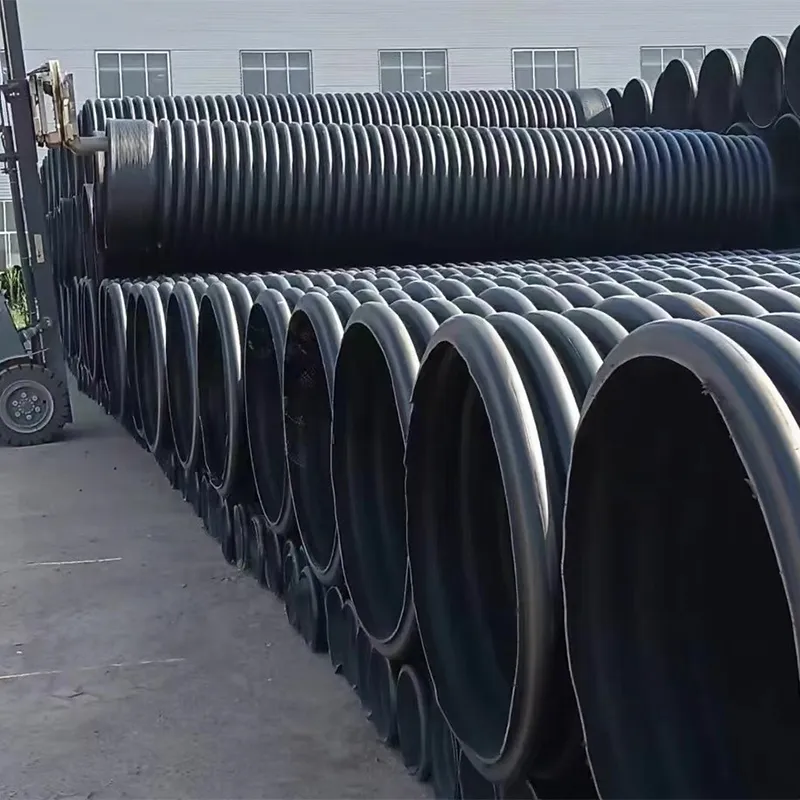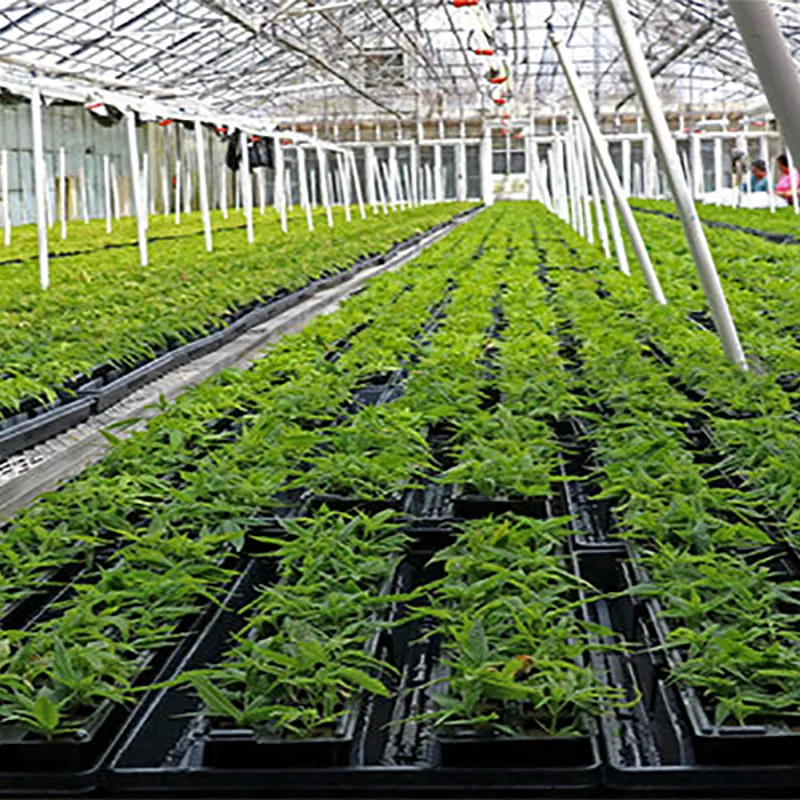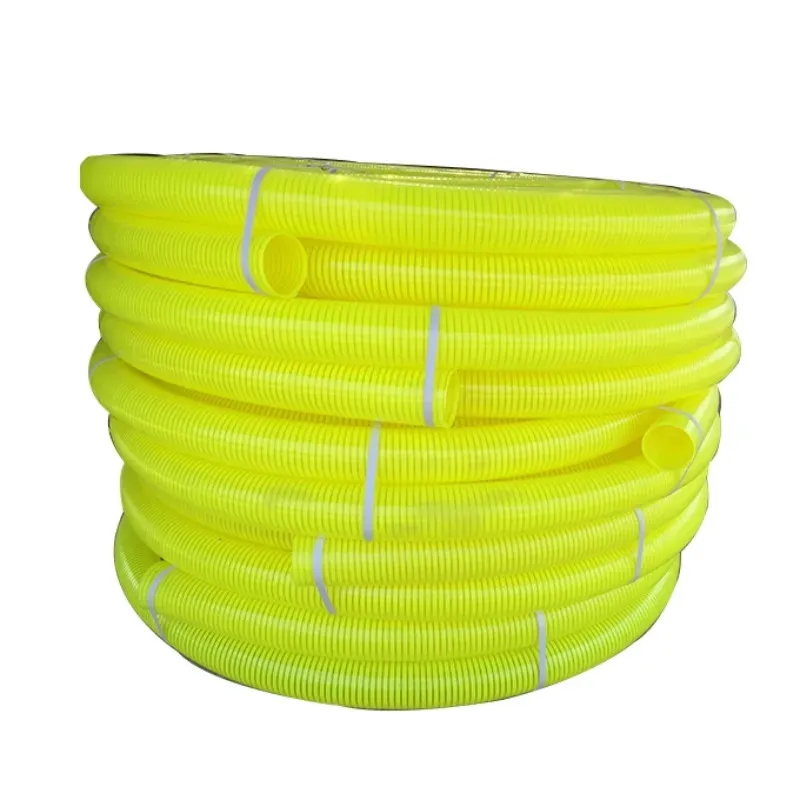Septic tanks effectively handle the task of sewage distribution through several key design features and processes. Effluent distribution is a critical process in wastewater management, and a 200-gallon septic tank can efficiently handle this task. Despite its smaller size, a 200-gallon septic tank incorporates design elements and processes that ensure the proper separation, treatment, and controlled discharge of effluent to the drain field.
Here's how a septic tank ensures efficient sewage distribution
Effluent distribution solution
1. Arrangement of water inlet and outlet
The design of the septic tank strategically arranges the water inlet and outlet pipes. The inlet pipe allows wastewater from the building's plumbing system to enter the tank, while the outlet pipe ensures the controlled discharge of treated wastewater to the drain. Proper placement and sizing of these pipes ensures a smooth flow of waste water through the tank and into the distribution system.
2. Baffle System
Baffles are internal partitions within a septic tank that help regulate the flow of wastewater. They prevent the immediate discharge of sewage from the inlet to the outlet, allowing sufficient residence time in the tank. This retention time allows separation of the solids, which settle at the bottom as sludge, while allowing the clarified liquid effluent to flow to the distribution system.
3. Sewage Quality Control
Septic tanks are designed to facilitate the settling of solids and decomposition of organic matter through the action of bacteria. This natural process helps to clarify wastewater, ensuring that only properly treated liquid is distributed to the drain. By removing solid waste and ensuring sewage quality, septic tanks minimize the risk of clogged or flooded drainage areas.
4. Distribution system design
The septic tank is connected to the drainage field or leaching field through distribution pipes or ditches. These pipes are perforated so that the sewage is evenly distributed into the surrounding soil. Proper design and dimensioning of the distribution system ensures an even distribution of sewage, prevents overloading of any particular area, and promotes optimal absorption and treatment of the soil.
5. Soil interaction
The sewage discharged from the septic tank enters the drainage field and interacts with the soil. Soil acts as a natural filter to further treat wastewater by removing harmful pathogens, organic compounds, and other pollutants. The design of the drainage field, including the type and permeability of the soil, ensures that wastewater is properly absorbed and treated so that it gradually infiltrates through the soil layers.
6. Proper Maintenance
Regular maintenance, such as regular pumping of septic tanks, is essential for efficient sewage distribution. Suction removes accumulated solids from the tank, preventing clogging and ensuring optimal function. Additionally, routine inspections by a professional can help uncover any issues that may affect the efficiency of your septic tank and distribution system so they can be repaired or adjusted promptly.
By combining these design features and following proper maintenance practices, septic tanks can effectively handle the task of sewage distribution. The 200 gallon septic tank is more popular in the market, it ensures that the treated wastewater is properly dispersed into the drainage field, and the natural process continues to purify it before returning to groundwater or other water sources, thus helping to establish a sustainable and efficient wastewater management system.
Wastewater management solution
Septic tanks play a vital role in wastewater management, providing an effective solution for properties with minimal water usage or limited footprint.
Here's how septic tanks handle wastewater management:
1. Wastewater Collection
Septic tanks receive wastewater from various sources on the property, including toilets, sinks, showers, and other plumbing fixtures. The tank is designed to collect and store wastewater for further treatment and disposal.
2. Solid separation
When the wastewater enters the septic tank, the solid waste particles settle at the bottom, forming a layer of sludge. The lighter material floats to the top as a scum, while the liquid portion (called the effluent) remains in the middle. The design and retention time of the septic tank are able to separate the solids from the liquid effluent.
3. Bacterial Decomposition
Inside a septic tank, the action of naturally occurring bacteria and microorganisms helps to decompose and decompose the organic matter present in the wastewater. This bacterial breakdown aids in the treatment of wastewater, reducing the concentration of harmful pathogens and organic compounds.
4. Sewage distribution
Once the sewage has been adequately treated in the septic tank, it can be distributed. A 200 gallon septic tank typically includes an outlet pipe or distribution box that regulates the controlled discharge of treated wastewater to a drain or leach field.
5. Drainage field absorption
The drainage field or leaching field connected to the septic tank is used as the next stage of wastewater treatment. Sewage from the tank enters the drainage field and seeps into the soil. Soil acts as a natural filter, further purifying sewage by removing pollutants and allowing them to be absorbed and processed by soil microbes.
6. Environmental Protection
Properly designed and maintained septic tanks ensure safe and environmentally friendly disposal of wastewater. By effectively treating and distributing sewage, septic tanks help protect groundwater sources, nearby water bodies, and entire ecosystems from pollution, promoting environmental sustainability.
7. Regular maintenance
To ensure optimal performance, septic tanks require regular maintenance. This includes regular pumping to remove accumulated solids and sludge, inspections to detect any problems or malfunctions, and compliance with local regulations and guidelines. Proper maintenance ensures the longevity and efficient operation of your septic system.
Although a 200 gallon septic tank is small in size, it can effectively handle wastewater management for properties with low water usage. By facilitating solids separation, bacterial breakdown, controlling wastewater distribution, and drain field absorption, 200 gallon septic tanks provide a reliable and efficient solution for wastewater treatment and disposal.
FAQ
Q1: What type of house is the 200 gallon septic tank suitable for?
A1: 200 gallon septic tanks are usually suitable for residences, small commercial buildings, or other smaller scale structures. They can meet the needs of low population densities or small sewage loads.
Q2: What is the size and capacity of the septic tank?
A2: The capacity of a 200 gallon septic tank is 200 gallons, which is about 757 liters. Actual product dimensions may vary.
Q3: How does this septic tank work?
A3: A 200 gallon septic tank is a device used to collect and decompose sewage and solid waste. Sewage flows from the house's sewer system into a septic tank, where it is broken down and separated. The decomposed liquid part is distributed through pipes to the underground drain, while the solid part is gradually deposited on the bottom of the septic tank.
Q4: How often do I need to clean the septic tank?
A4: The frequency of cleaning your septic tank depends on a variety of factors such as the number of occupants, sewage load, septic tank design and local code requirements. It is generally recommended to clean your septic tank every 1 to 3 years to ensure it is functioning properly and to avoid excessive buildup.
Q5: Does this septic tank require maintenance?
A5: Yes, 200 gallon septic tanks require regular maintenance. This includes cleaning out the septic tank, checking the function of drain lines and valves, and making sure the pumps and controls in the system are working properly. It is important to have a proper maintenance schedule in place, based on the manufacturer's recommendations and local regulations.
Q6: Does the 200 gallon septic tank meet environmental protection standards?
A6: The compliance of a 200 gallon septic tank depends on its design and manufacturing quality. Compliant septic tanks should meet local environmental standards and pass relevant certifications or tests. Before installing a septic tank, it is recommended to understand local regulations and requirements, and choose a product that meets the standard.
Q7: Where can a 200 gallon septic tank be installed?
A7: The 200 gallon septic tank is usually installed outdoors and can be buried underground. The location of the installation shall allow for easy access to the sewer system and discharge distribution piping and comply with local codes and regulations.
Q8: How long is the life of a 200 gallon septic tank?
A8: The life of a 200 gallon septic tank depends on several factors, including quality of manufacture, usage and maintenance, and local environmental conditions. Generally speaking, with proper use and regular maintenance, our septic tanks can last for 50 years.
Q9: Does a 200 gallon septic tank need to install a pump?
A9: Whether a pump needs to be installed depends on the specific installation environment and the drainage requirements of the sewer system. In some cases, such as when the septic tank is located in a low-lying area or away from a main sewer, it may be necessary to install a pump to push the liquid to the distribution pipe or disposal system.
Q10: Do I need professional help installing a 200 gallon septic tank?
A10: Installing a septic tank usually requires professional construction and installation services. This ensures that the septic tank is installed correctly and in compliance with local safety and code requirements. Please consult a local septic tank installation professional or related contractor for professional advice and service.
Please note that the above questions and answers are intended to provide general information about septic tanks for 200 gallon sewage distribution and may vary for your specific situation. Always refer to our guidelines and requirements and follow local codes and regulations when purchasing, installing and maintaining a septic tank.
In conclusion, a 200-gallon septic tank offers an efficient and reliable solution for effluent distribution in wastewater management. Despite its smaller size, this septic tank effectively handles the collection, separation, and treatment of wastewater, ensuring the proper disposal of treated effluent. Through processes such as solids separation, bacterial decomposition, and controlled effluent distribution, the 200-gallon septic tank promotes optimal absorption and filtration in the drain field or leach field. Additionally, by adhering to regular maintenance practices and compliance with regulations, the septic tank provides an environmentally-friendly approach to wastewater management. With its ability to handle the task of effluent distribution effectively, the 200-gallon septic tank proves to be a practical choice for properties with minimal water usage or limited occupancy, ensuring the safe and sustainable treatment of wastewater.


925.webp)




294.webp)
476.webp)
420.webp)
146.webp)
460.webp)
287.webp)
274.webp)
688.webp)


